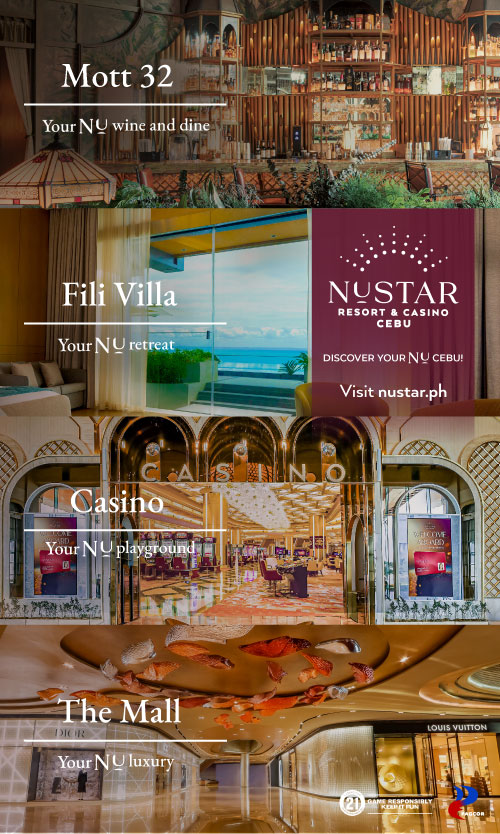Arts & Culture
The Return of the Best-Tasting Lechon in Cebu, Rico’s Lechon
Cebuanos, rejoice! Rico’s Lechon makes a comeback in the city.
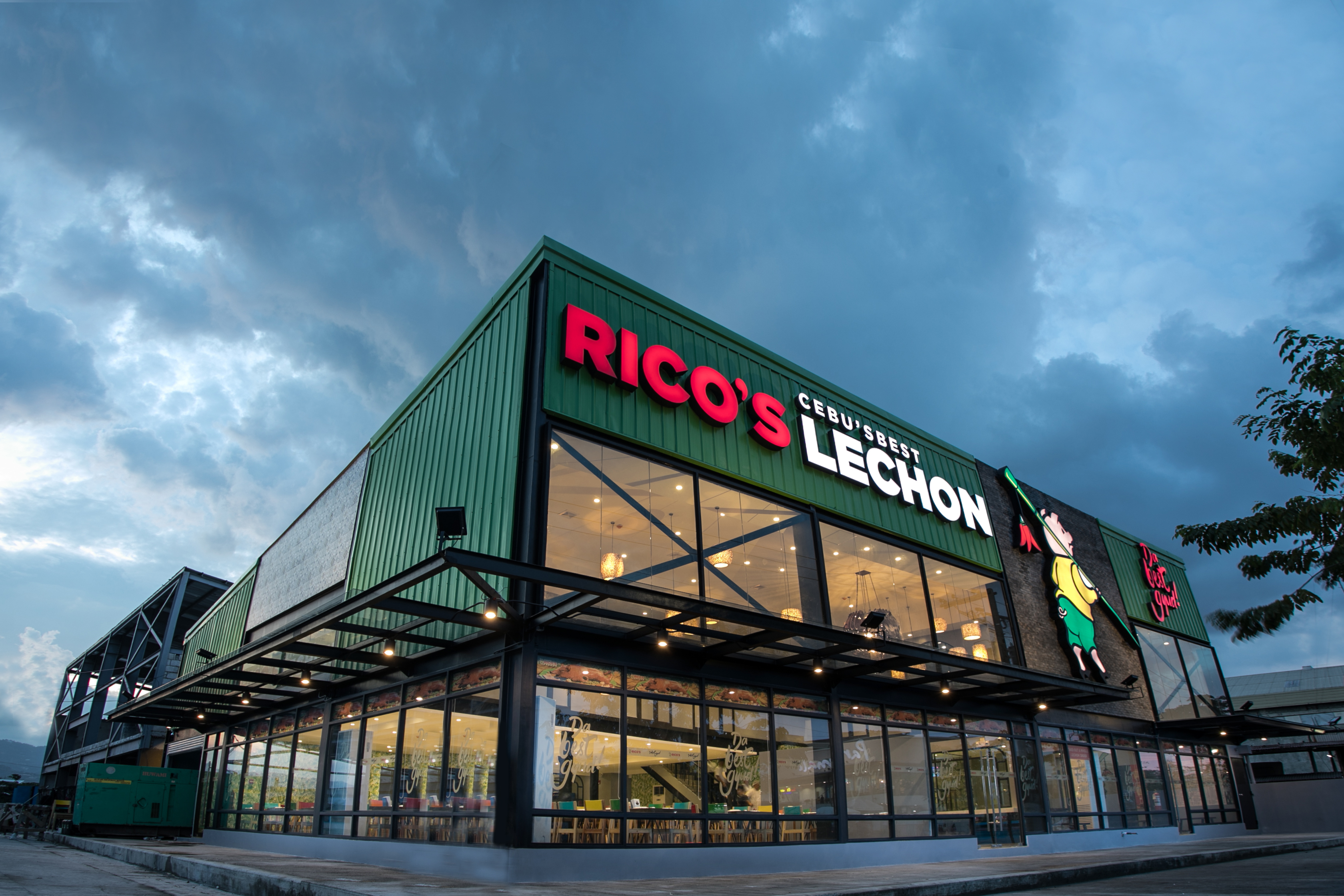
Several minutes to 11:00 on a cloudy Friday morning, a man clad in a pineapple print polo shirt stood in a tight circle of eager faces. His neutral-colored top contrasted with the boldness of their red uniforms. The man wore a serious look occasionally interrupted by a smile as he addressed his small crowd. He meant business. His hand gestures displayed a purposefulness that did not cause distraction but drew attention. The team huddle ended on a positive note as everyone placed their hands atop each other’s in the middle of the circle and recited their chant for the day, smiling all the while. The man’s smile was among the brightest, and it stayed that way for as long as he was in the room, welcoming people—young and old, foreign and local—to a restaurant that came back to serve the best tasting lechon in the city.
The man was Mr. George Pua, president of Meat Concepts Corporation and new owner of Rico’s Lechon. And the restaurant was the biggest one in the chain, which started officially serving the public on June 28, 2019. George had his hands full even before the restaurant opened, but he seemed to have drunk from the well of never-ending energy and enthusiasm as he tirelessly talked with and offered friends and guests a smile. My colleague and I were two of its many recipients. In an exclusive interview in one of the restaurant’s function rooms on the second floor, I learned that George’s enthusiasm went beyond the successful opening of another business. He was happy to not only be eating Cebu’s best lechon but also sharing it with his fellow and potential “lechon fanatics.”

L-R: Assistant to the President Meat Concepts Corporation Mari-Jo T. Barles, Vice President Meat Concepts Corporation Jay R. Lazaro, President of Meat Concepts Corporation George N. Pua, Sales and Marketing Manager Cebu, Rico’s Lechon Michael “Pops” S. Bacatan
A Long-Time Love for Lechon
“Lechon fanatic,” was what George called himself when he told us how his young self fell in love with the dish. “I lived in Baclaran, and every time I opened my window, it’s all lechon. It’s all lechon being paraded. Every time I opened my window I would see lechon and I would ask the maid to buy me ¼ kilo. Every time I opened my window.” The repetition in his response left no room for doubt; he was—is—indeed a real lechon fan.

Rico’s Lechon comes in orignal and spicy variants.
It was this love that brought him on a 5-day trip in the Queen City of the South six years ago, eating nothing else for lunch and dinner but lechon. He was on a mission: to taste the best lechon. He tried all brands he could get his hands on, even when it meant going as far as Talisay and Carcar. One store in the former, which was his host friend’s favorite, secured the second spot in George’s brief list of best lechon brands. Rico’s Lechon came first.
George’s list was no surprise. I’m not the biggest lechon fan—I don’t crave it when I’m overseas—but I appreciate a great dish when I taste one, Rico’s Lechon included. I liked how tender and flavorful the meat was that I didn’t even have to dip it in sauce. The skin was not fatty and had just the right crispness, which saved me from feeling jaw pain because of excessive chewing. There was an added sense of gastronomic satisfaction from seeing how the lechon was chopped before it arrived at our table. I might have eaten more than what I intended to.
A Determined Man
George liked the tenderness of the lechon he tasted in Talisay, but the brand only offered the original variant whereas Rico’s Lechon offered both original and spicy. “If you are a good businessman, or if you have a business acumen, you would want the original and the spicy,” he said.
He soon met Enrico “Rico” Dionson, founder of Rico’s Lechon. At that time, George only wanted to know the man who perfected the recipe to the best tasting lechon; he had no intentions of buying or franchising the brand. But he did ask him of potential plans to open a store in Manila, to which the latter responded with a firm no. Since then, George made it a point to eat at Rico’s Lechon and chat with Rico every time he visited Cebu. The question of opening a branch in Manila would sometimes come up in these conversations. The third time it did, George took a different approach and asked whether he could instead franchise the brand. Rico was steadfast in his initial response.
Things started to take shape when a common friend reintroduced George to Rico in 2015. This connection solidified the former’s love for lechon to the latter, who finally saw George as more than just a businessman eyeing a new venture. And in 2017, amid a busy night of setting up one of his restaurants and preparing for a flight to Japan the next day, George received an unexpected call from Rico. The call caught him off guard that he momentarily forgot who Rico Dionson was. “I should know him because he’s in my phonebook,” he said with a laugh. He picked up the call, and it was then that thoughts of eating Cebu’s best tasting lechon in Manila became reality—Rico offered to sell the entire brand. George had no hesitation in saying yes.
Before the official contract signing in February 2018, George’s Feng Shui master came to Manila to “read” him for the next year. George, who then wanted to know his compatibility with Rico as a business partner, asked his ninong to also do a quick reading of Rico. Rico consented. Then the reading happened. “You have a good heart, but you talk too much,” George quoted.
Nevertheless, the Feng Shui master gave them his blessings and they soon signed a contract. By May of the same year, Meat Concepts Corp. took over the entire operations. In August, they opened their first Manila store in Bonifacio Global City; in September, Glorietta 1; October, Tiendesitas; November, UP Town Center; and in February 2019, SM Mall of Asia. It was a productive year for George.
“Old Cebu with a Twist”
The success of the great RICOmeback seemed to suggest that this year will be as busy, if not more, as the last. The brand’s flagship outlet can accommodate 300 people and has four function rooms, whose names refer to the places where Rico’s Lechon used to stand. “We wanted to be reminded of our roots,” George explained.
George chose the location because it fits his criteria—not in Cebu City but near it. His friends’ opinion, that the area is a new segment of progress in Mandaue, made decision making easier for him.
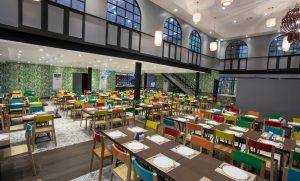
The dining area of Rico’s Lechon Mandaue boasts Sinulog colors
He was also very much involved in the conceptualization of the restaurant’s interior design. He wanted to showcase the “Old Cebu with a Twist,” so he incorporated elements of Sinulog into the restaurant. Instead of hanging buntings like people do during fiestas, which can look messy inside a confined space, George asked his Cebuano chair manufacturer to paint the backrests of chairs in bright yellow, green, apple blue, and red. “So, when you lay out the seating arrangement, you all see the different colors. It’s like a bunting,” he said.
Other Cebuano-made items included tables and hanging lamps. What I found most interesting about the restaurant’s interior, however, was the lechon plate chandelier. George revealed that it was the last fixture added and its creation materialized mostly out of a desire to avoid wasting resource. George ordered these plates with the intent of using them for what they really were, but the vendor shipped them to him in the wrong size. Instead of complaining about what went wrong, George focused on the positive and asked his manufacturer to make a chandelier using his oversized lechon plates.
A Foodie’s Menu
Rico’s Lechon’s expansion is evident not only in the restaurant’s space but also in its menu. Other than their renowned lechon, they now serve more Filipino favorites like Special Boneless Bangus, Sizzling Lechon Sisig, Monggos, and Bicol Express. New additions to the list include Grilled Pork Belly, Sinigang na Baka at Baboy, Sisig Fried Rice, and Buttered Mixed Seafoods.
The new management may have tweaked the menu, but George promised that they did not and will never change the original lechon recipe. “There’s no ego here. I always say [that] it’s not who runs it or who owns it. It’s just the way that you present it to be the best and only the best, and make people smile and happy. That’s the most important thing. It doesn’t matter who owns it anymore,” he explained.
As a foodie, George understands the feeling of going to one’s favorite restaurant and finding out—a true foodie will, almost always immediately—that the management changed their recipe. He does not want his food to be “bastardized,” and he assured me that it will never happen in his restaurant.
George shared that he can be adventurous and instinctive when it comes to food. When he goes to a restaurant, he orders a lot and eats them all (food waste is a no-deal). He cited his recent solo travel to Spain as an example, where he ordered about 12 plates of Spanish food for lunch. All for himself. The look on his face as he was narrating this story told me that he still could not believe what he did. And on the 4th day, to change things a bit, he had lunch at KFC.
After sharing a good laugh, I decided to bring the interview to a close. I wished George sincere congratulations and expressed my anticipation for brighter days ahead. With his familiar smile, he thanked me then said: “I promise with all my heart, with all my mind, with all my power, [that] we will maintain the same taste of lechon.”
Visit Rico’s Lechon Mandaue at Unit F1 Jamestown, Mantawi International Drive, Mandaue City. They are open daily from 10:00 AM to 10:00 PM.
Arts & Culture
Visayas Art Fair Year 5: Infinite Perspectives, Unbound Creativity
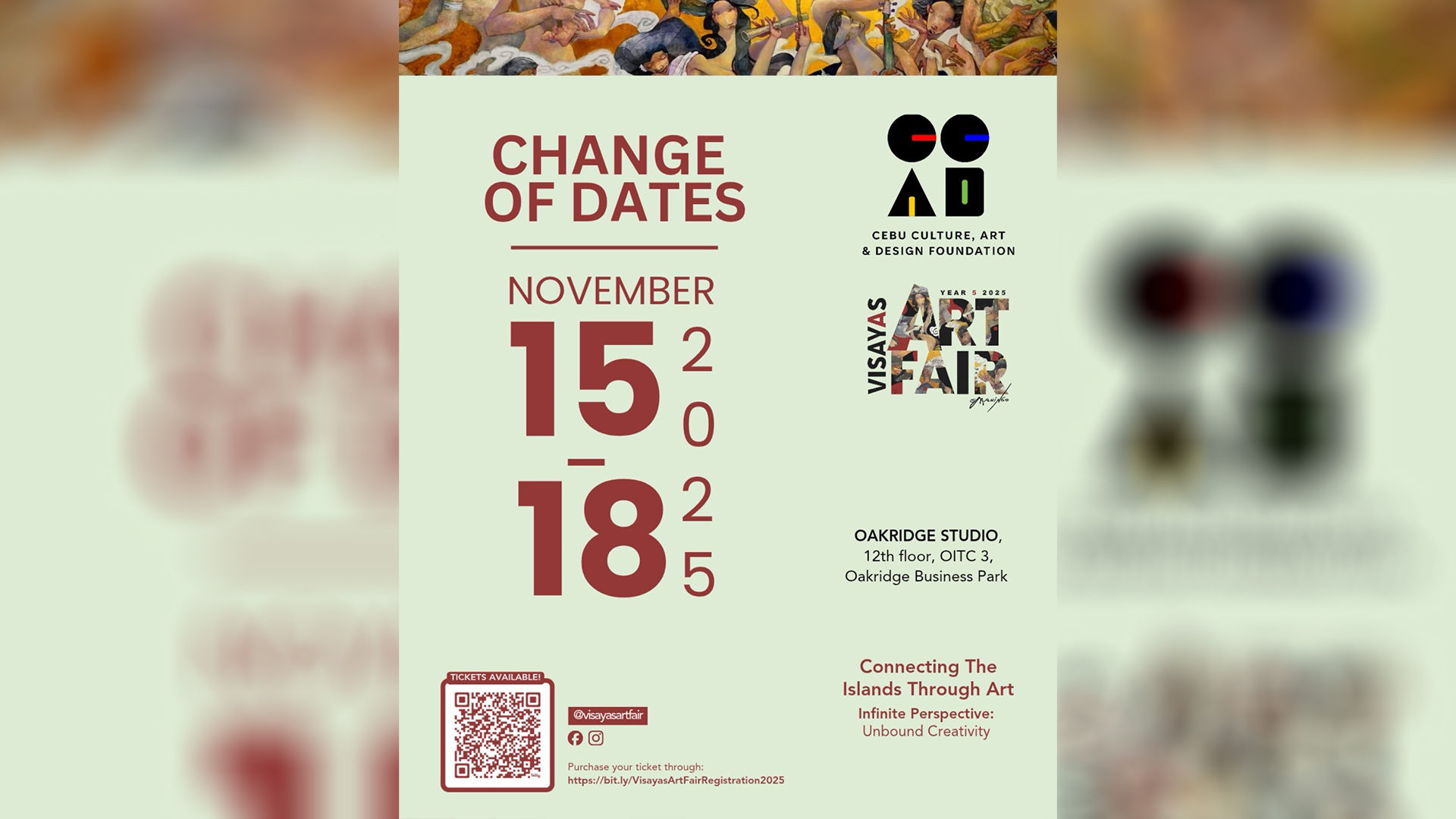
by Jing Ramos
This year’s Visayas Art Fair marks its 5th anniversary, celebrating the theme “Infinite Perspectives: Unbound Creativity.” The fair continues its mission of bridging creativity, culture, and community in the country. This milestone edition strengthens its partnership with the National Commission for Culture and the Arts and expands collaborations with regional art organizations and collectives—reinforcing its role as a unifying platform for Philippine art.
VAF5 features the works of Gil Francis Maningo, honoring the mastery of his gold leaf technique on opulent portraits of the Visayan muse Carmela, reflecting spiritual awareness.

Gil Francis Maningo is celebrated for his gold leaf technique.
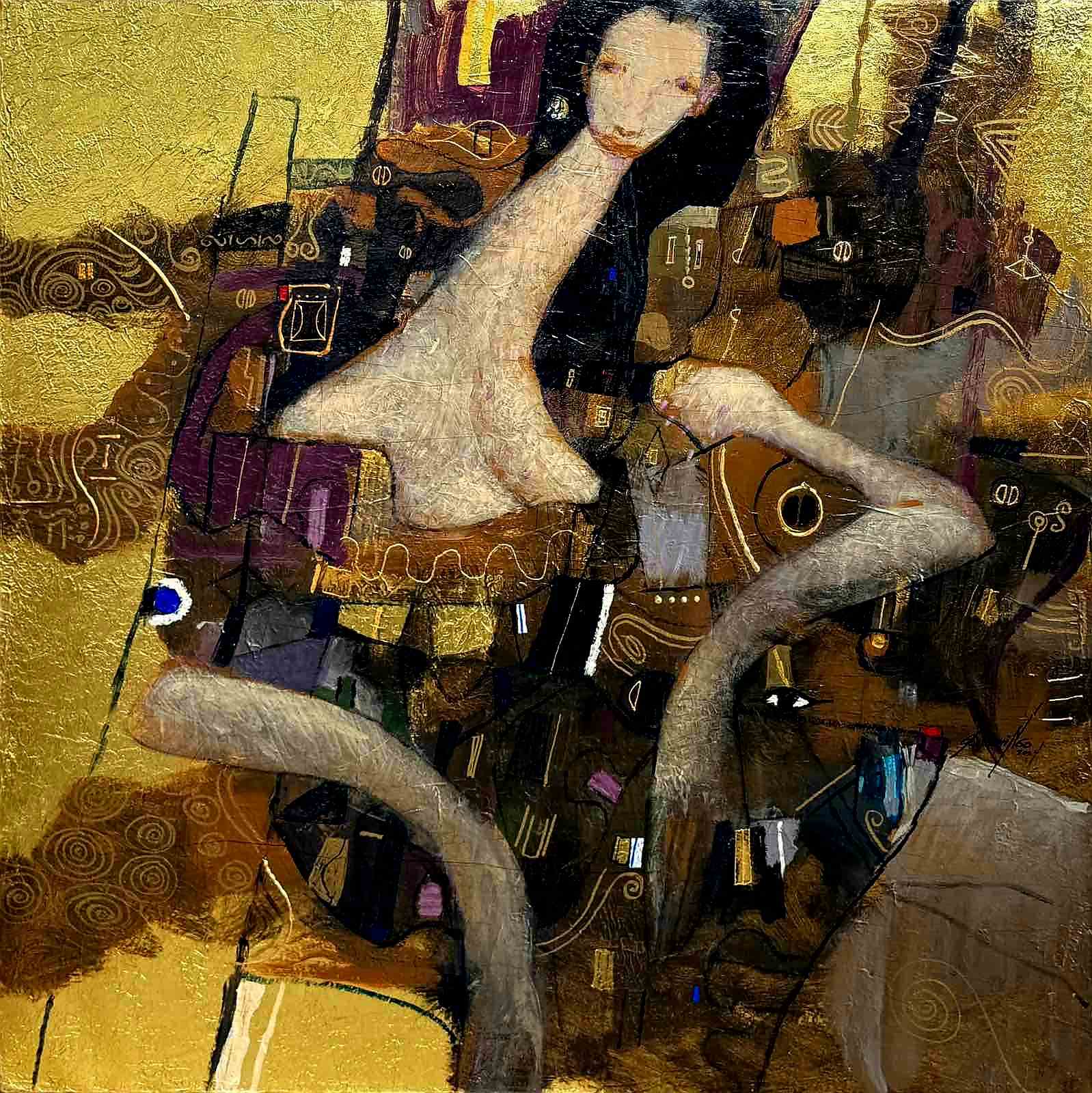
Gil Francis Maningo’s recurring theme of his Visayan muse “Carmela”.
Another featured artist is Danny Rayos del Sol, whose religious iconography of Marian-inspired portraits offers a profound meditation on the sacred and the sublime. This collaboration between two visual artists sparks a dialogue on the Visayan spirit of creativity and resilience. Titled “Pasinaya,” this dual showcase explores gold leaf as a medium of light and transcendence.
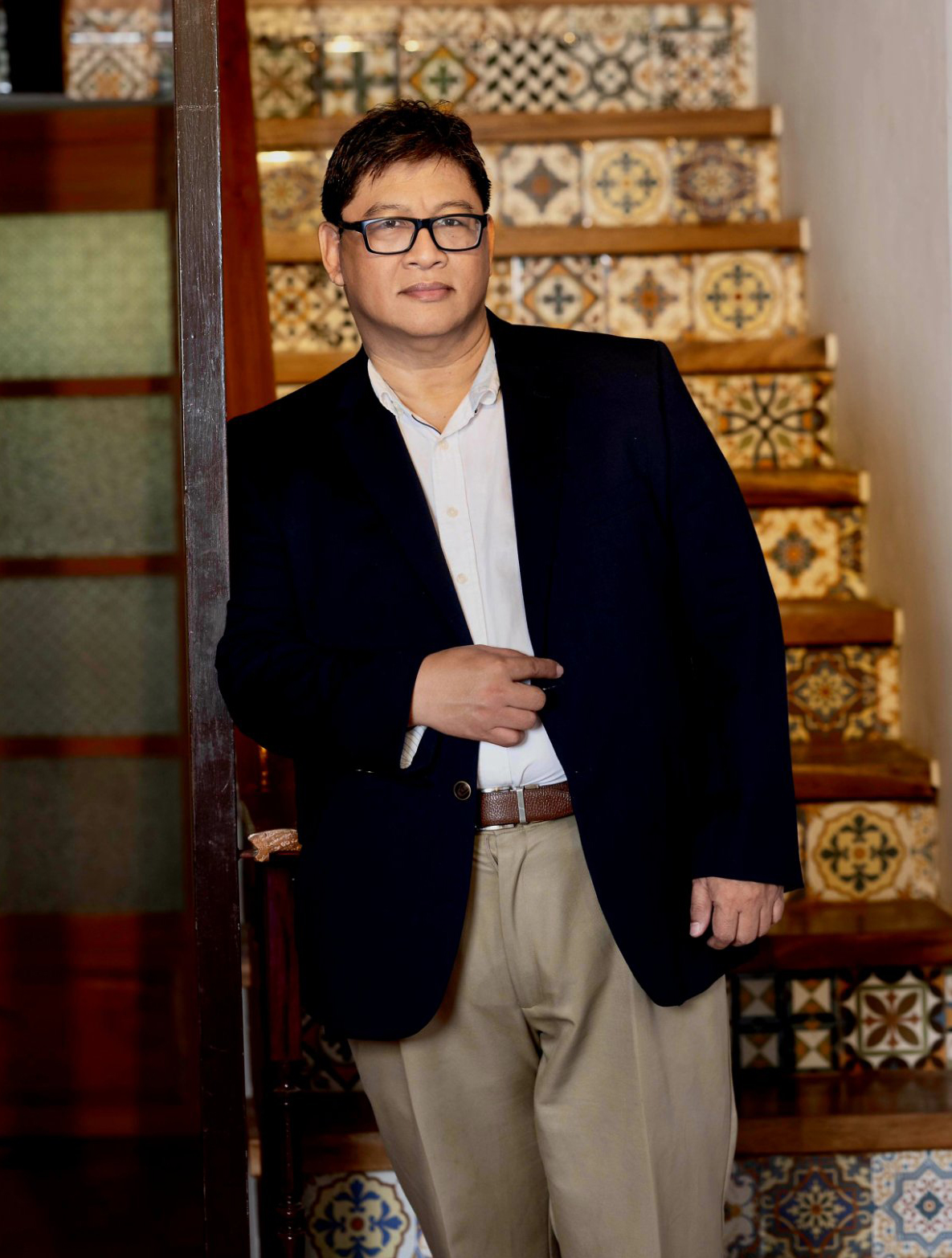
Artist Danny Reyes del Sol
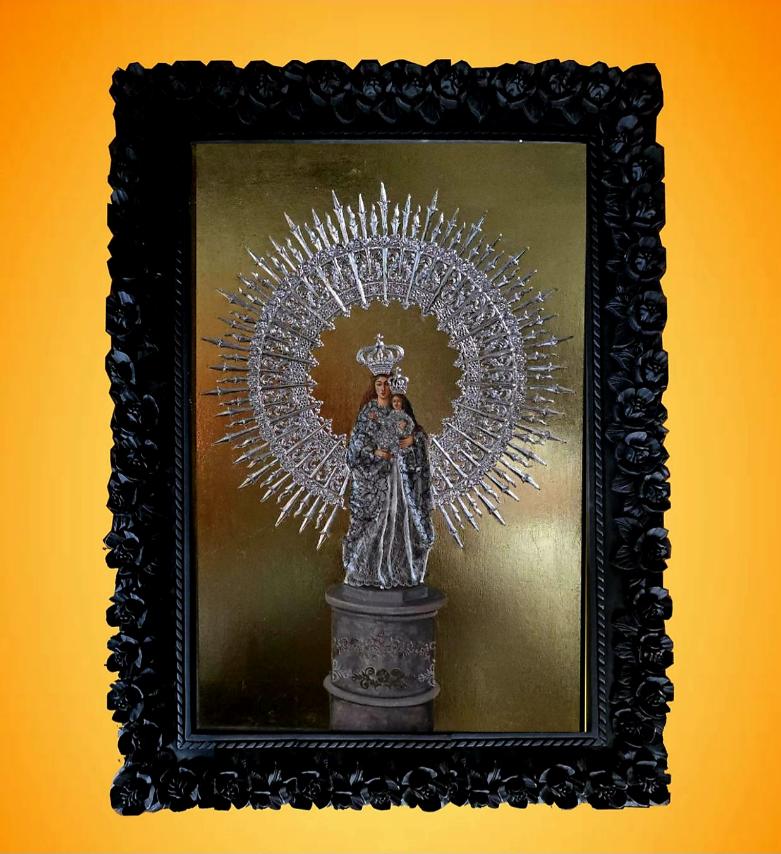
Danny Reyes del Sol’s religious iconography.
Now in its fifth year, the Visayas Art Fair has influenced a community of artists, gallerists, brokers, collectors, museum curators, and art critics—constructing a narrative that shapes how we approach and understand the artist and his work. This combination of factors, destined for popular consumption, illustrates the ways in which art and current culture have found common ground in a milieu enriched by the promise of increased revenue and the growing value of artworks.
Laurie Boquiren, Chairman of the Visayas Art Fair, elaborates on the theme, expressing a vision that celebrates the boundless imagination of unique artistic voices:
“Infinite Perspectives speaks of the countless ways artists see, interpret, and transform the world around them—reminding us that creativity knows no single point of view. Unbound Creativity embodies freedom from convention and controlled expression, allowing every artist to explore and experiment without borders.”
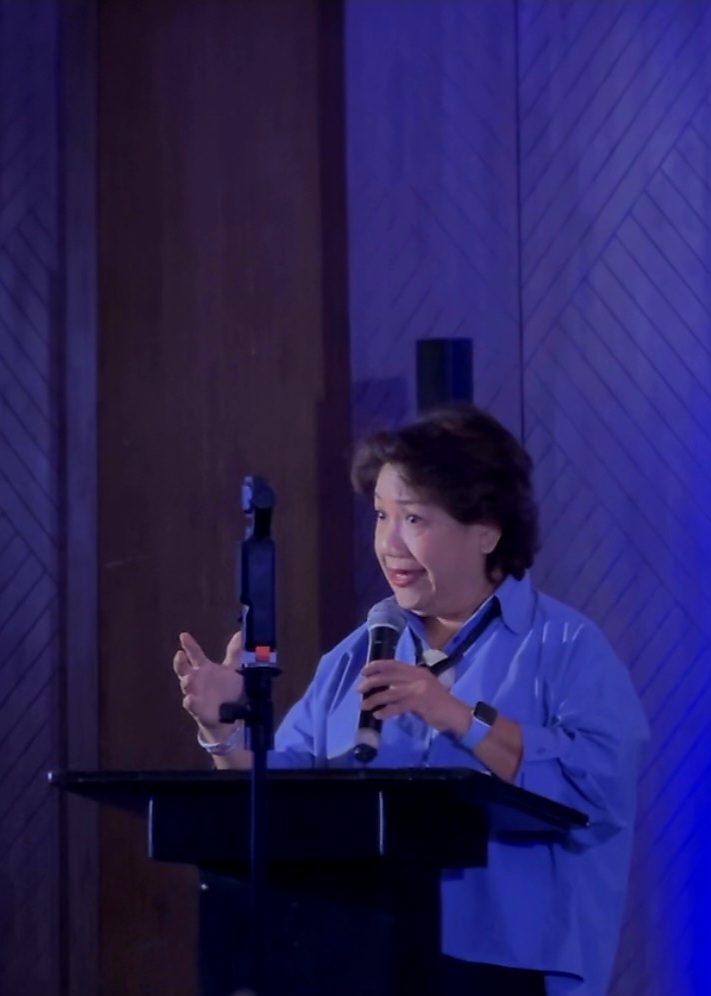
Laurie Boquiren, Chairman of the Visayas Art Fair has tirelessly championed the creative arts for the past five years.
Arts & Culture
Kultura. Kapital. Kasalukuyan: Art that Speaks of Today

by Jose Carlos G. Campos, Board of Trustees National Museum of the Philippines
The National Museum of the Philippines (NMP) and the Bangko Sentral ng Pilipinas (BSP) recently teamed up to prove that money isn’t just for counting—it’s also for curating! Their latest joint exhibition, Kultura. Kapital. Kasalukuyan: Contemporary Art from the Bangko Sentral ng Pilipinas Collection, is now open, and it’s a real treat for art lovers and culture buffs alike.
On display are gems from the BSP’s contemporary art collection, including masterpieces by National Artist Benedicto Cabrera (Bencab), along with works by Onib Olmedo, Brenda Fajardo, Antipas Delotavo, Edgar Talusan Fernandez, and many more. Some of the artists even showed up in person—Charlie Co, Junyee, Imelda Cajipe-Endaya, Demi Padua, Joey Cobcobo, Leonard Aguinaldo, Gerardo Tan, Melvin Culaba—while others sent their family representatives, like Mayumi Habulan and Jeudi Garibay. Talk about art running in the family!
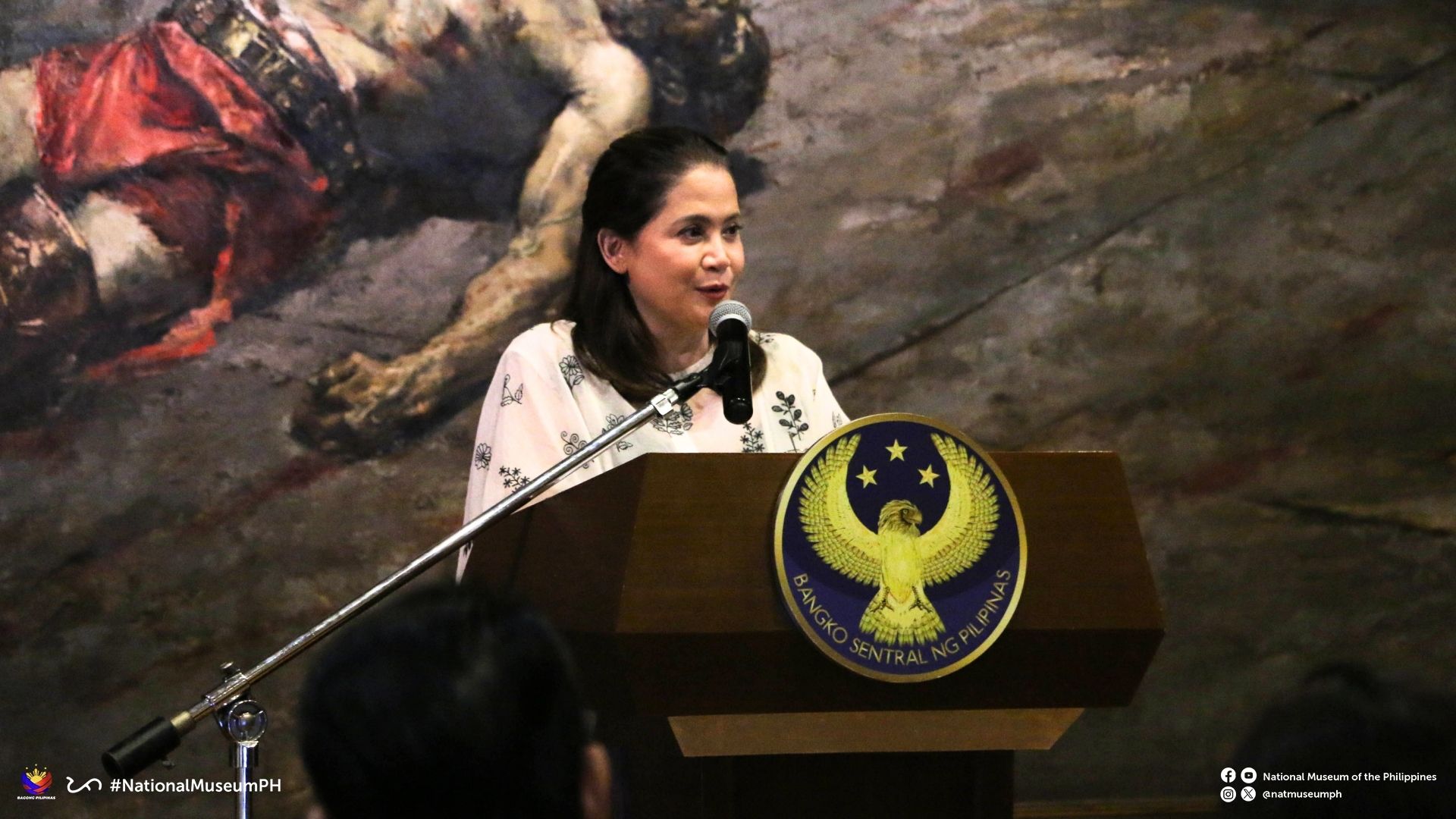
Deputy Governor General of the BSP, Berna Romulo Puyat
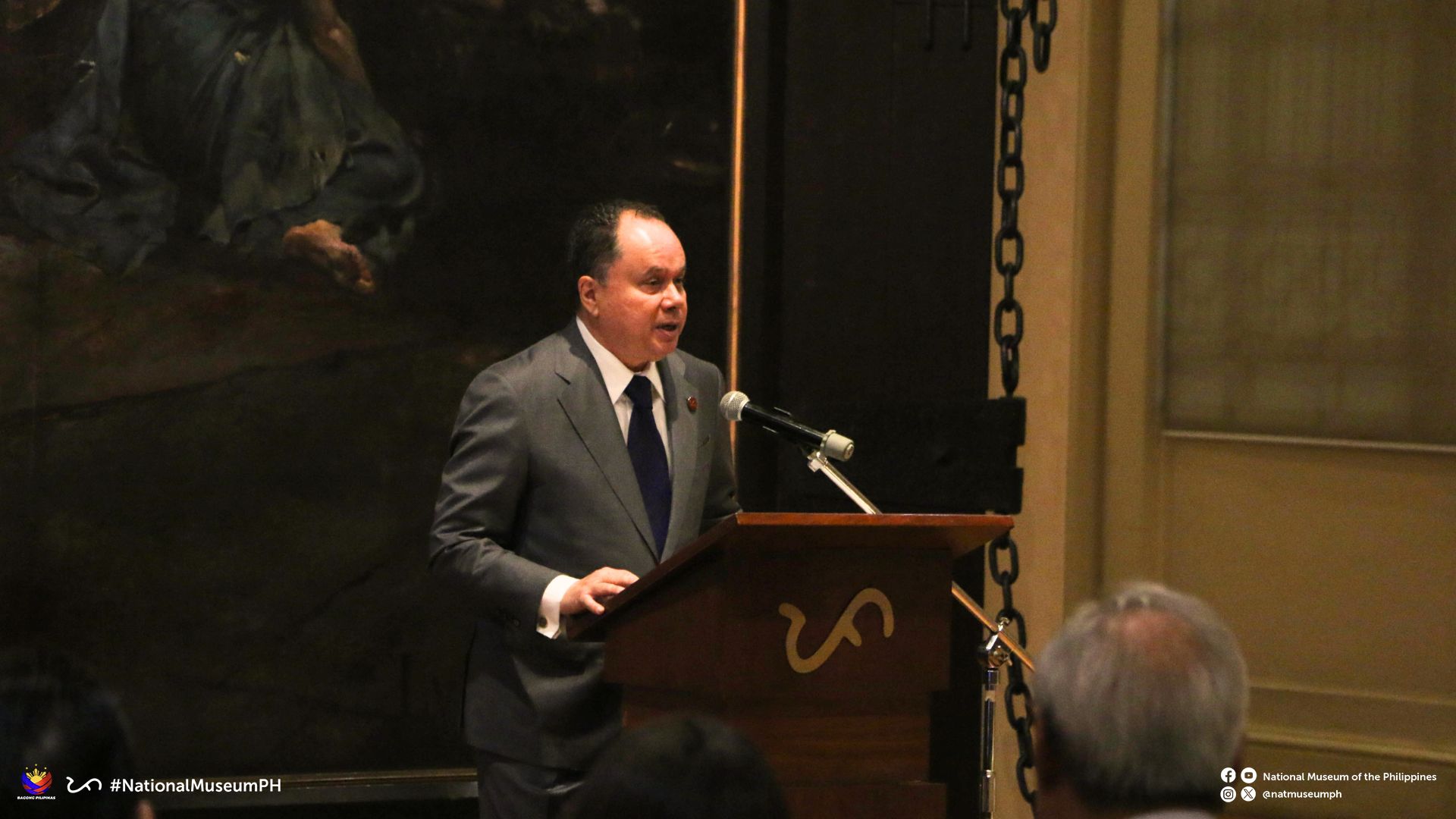
Chairman of NMP, Andoni Aboitiz
The BSP Governor Eli M. Remolona, Jr. and members of the Monetary Board joined the event, alongside former BSP Governor Amando M. Tetangco, Jr., Ms. Tess Espenilla (wife of the late Nestor A. Espenilla, Jr.), and the ever-graceful former Central Bank Governor Jaime C. Laya, who gave a short but enlightening talk about the BSP art collection.
From the NMP, Chairman Andoni Aboitiz, Director-General Jeremy Barns, and fellow trustees NCCA Chairman Victorino Mapa Manalo, Carlo Ebeo, and Jose Carlos Garcia-Campos also graced the occasion. Chairman Aboitiz expressed gratitude to the BSP for renewing its partnership, calling the exhibition a shining example of how financial institutions can also enrich our cultural wealth.
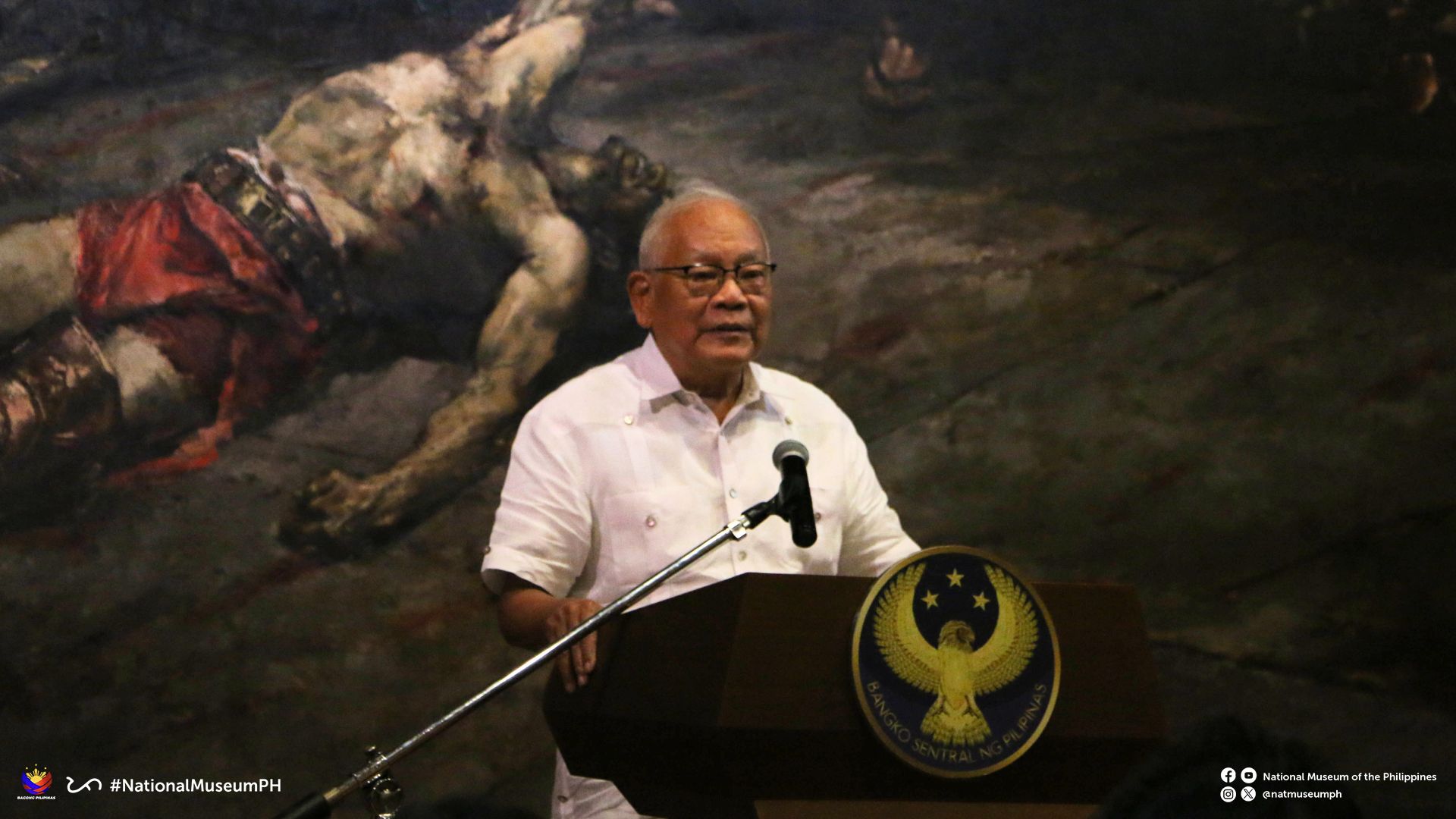
Former Governor of BSP Jaime Laya
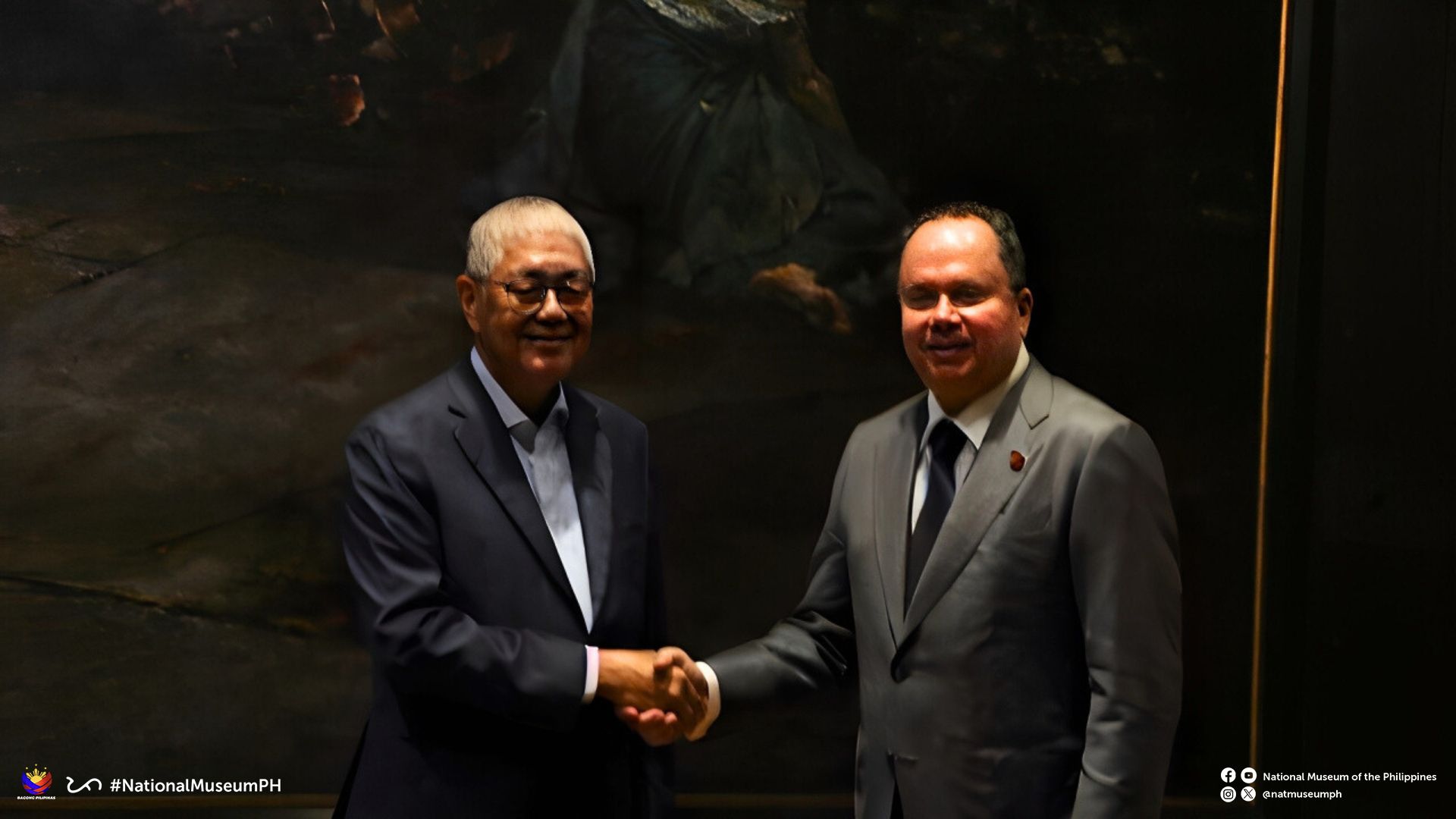
Governor of BSP Eli M. Remona and Chairman of NMP Board Andoni Aboitiz
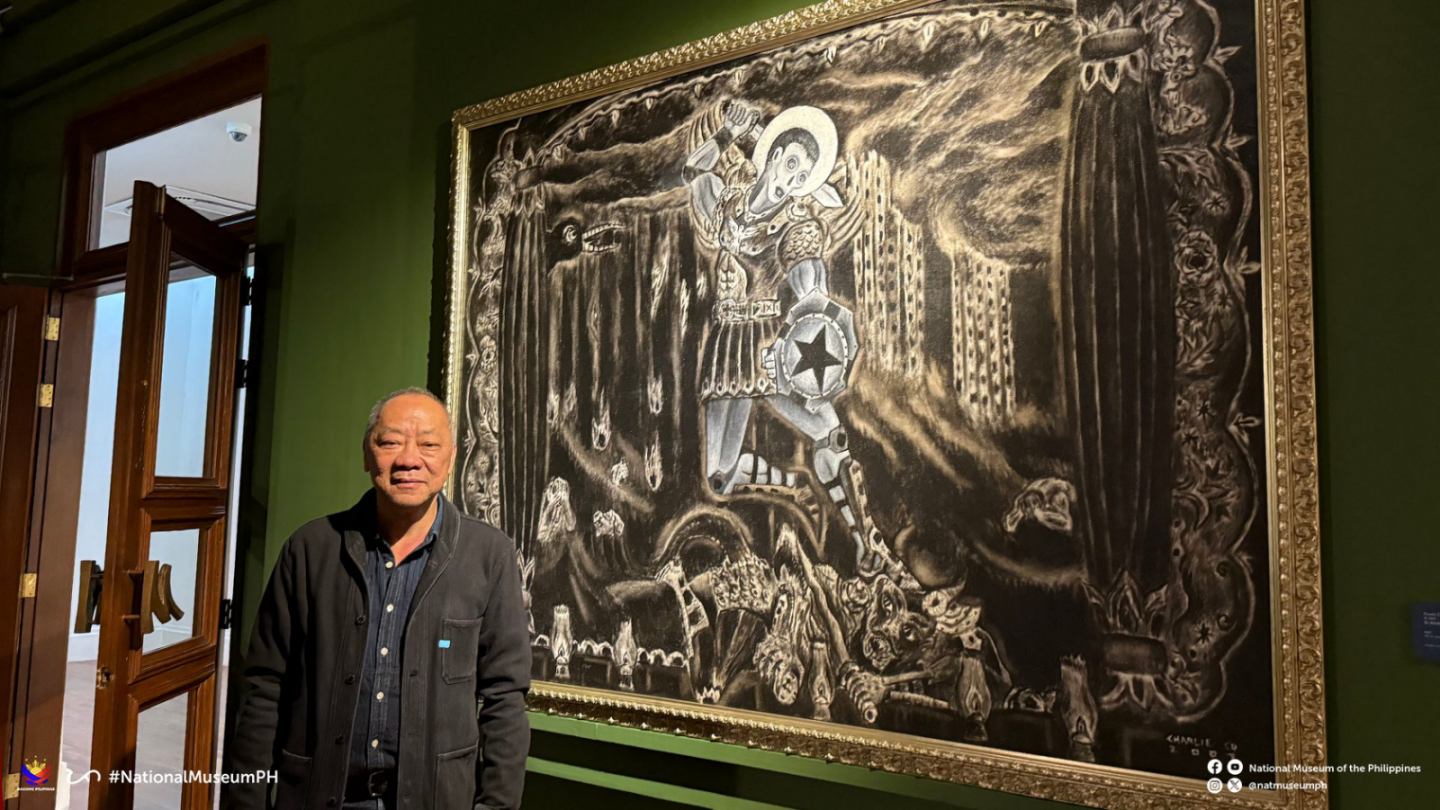
Artist Charlie Co
Before the official launch, a special media preview was held on 5 August, hosted by BSP Deputy Governor Bernadette Romulo-Puyat and DG Jeremy Barns. It gave lucky guests a sneak peek at the collection—because sometimes, even art likes to play “hard to get.”
The exhibition Kultura. Kapital. Kasalukuyan will run until November 2027 at Galleries XVIII and XIX, 3/F, National Museum of Fine Arts. Doors are open daily, 9:00 AM to 6:00 PM. So if you’re looking for something enriching that won’t hurt your wallet (admission is free!), this is your sign to visit. After all, the best kind of interest is cultural interest.
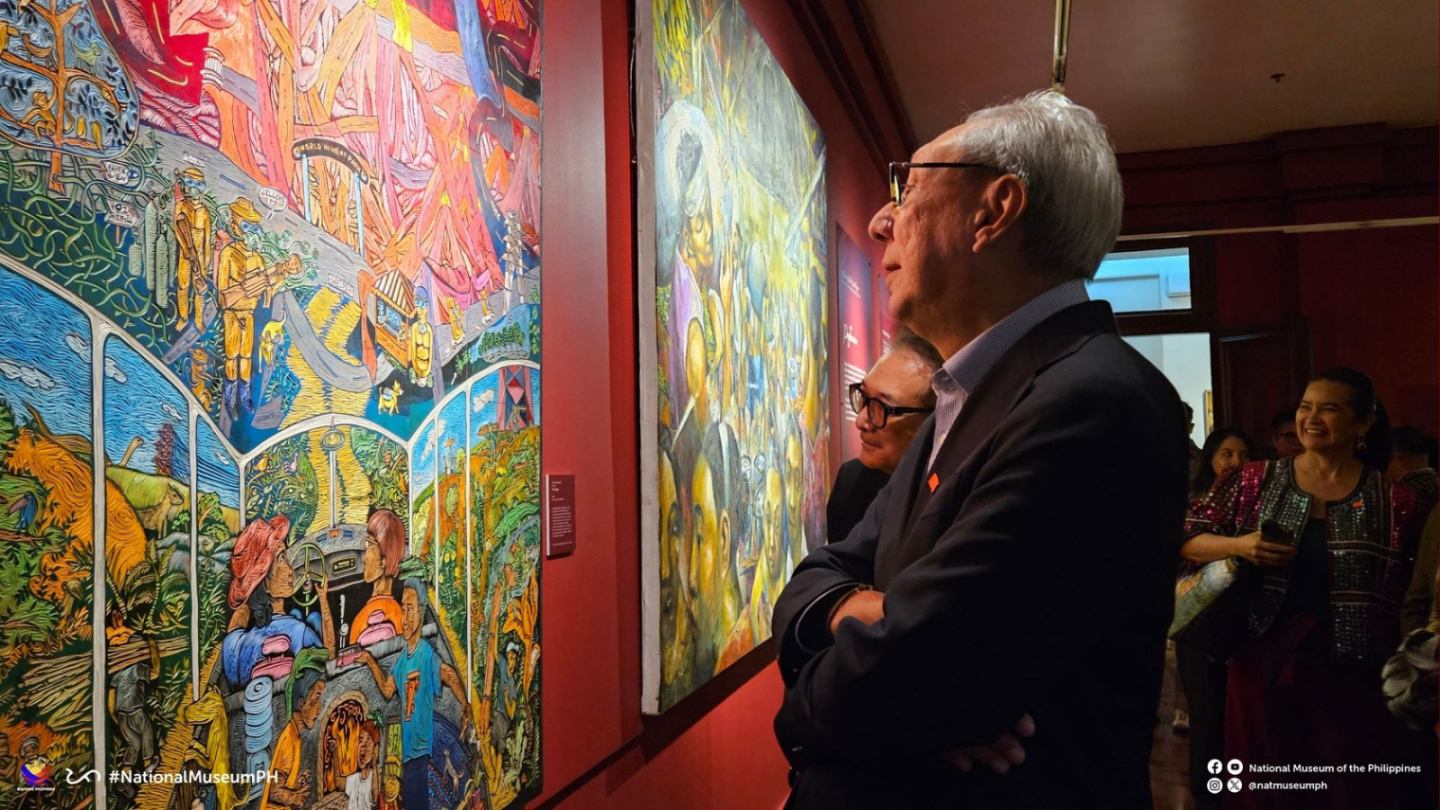
Monetary Board of the BSP, Walter C. Wassmer
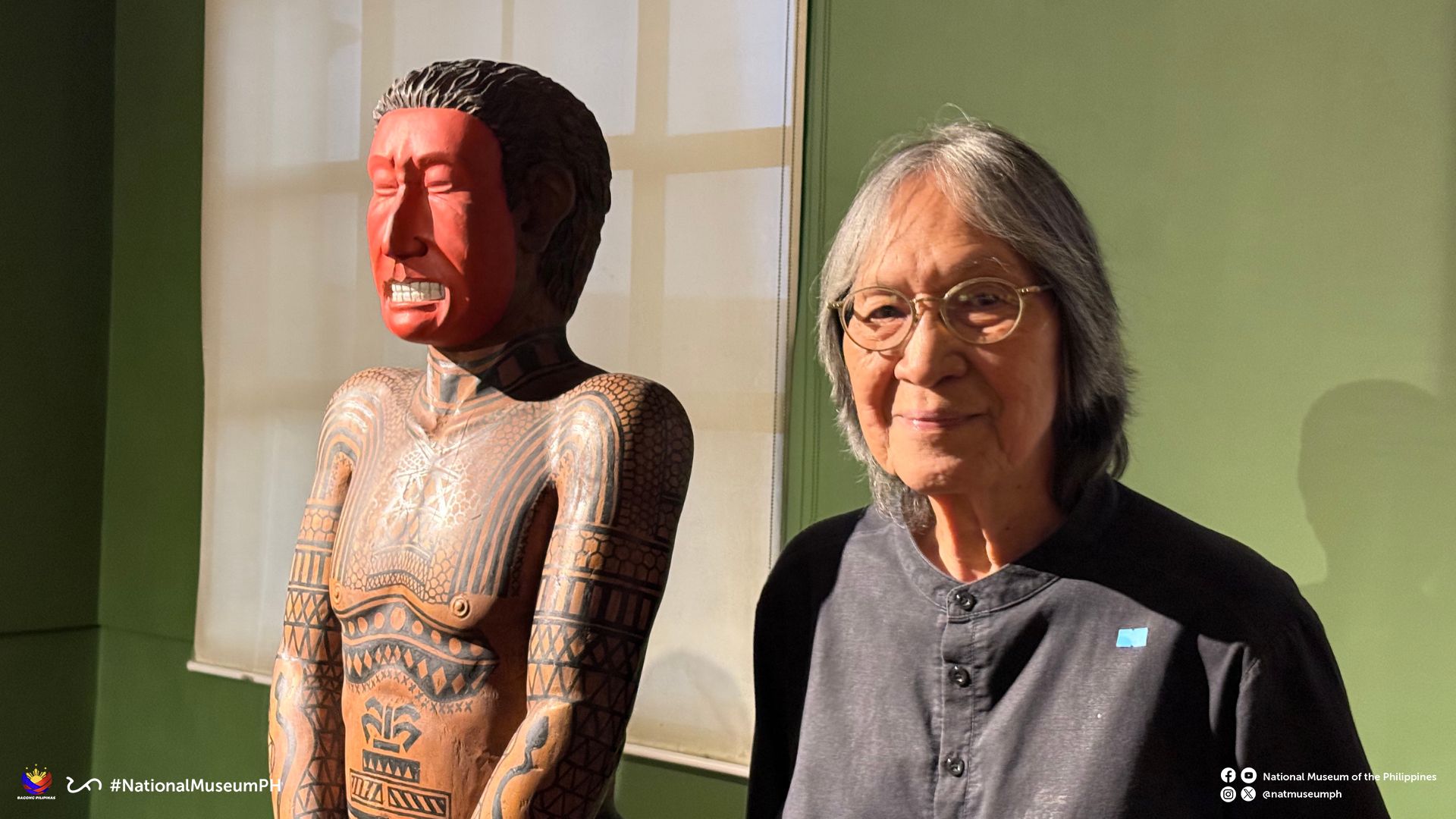
Luis Yee, Jr. aka ‘Junyee’ The Artist beside his Sculpture
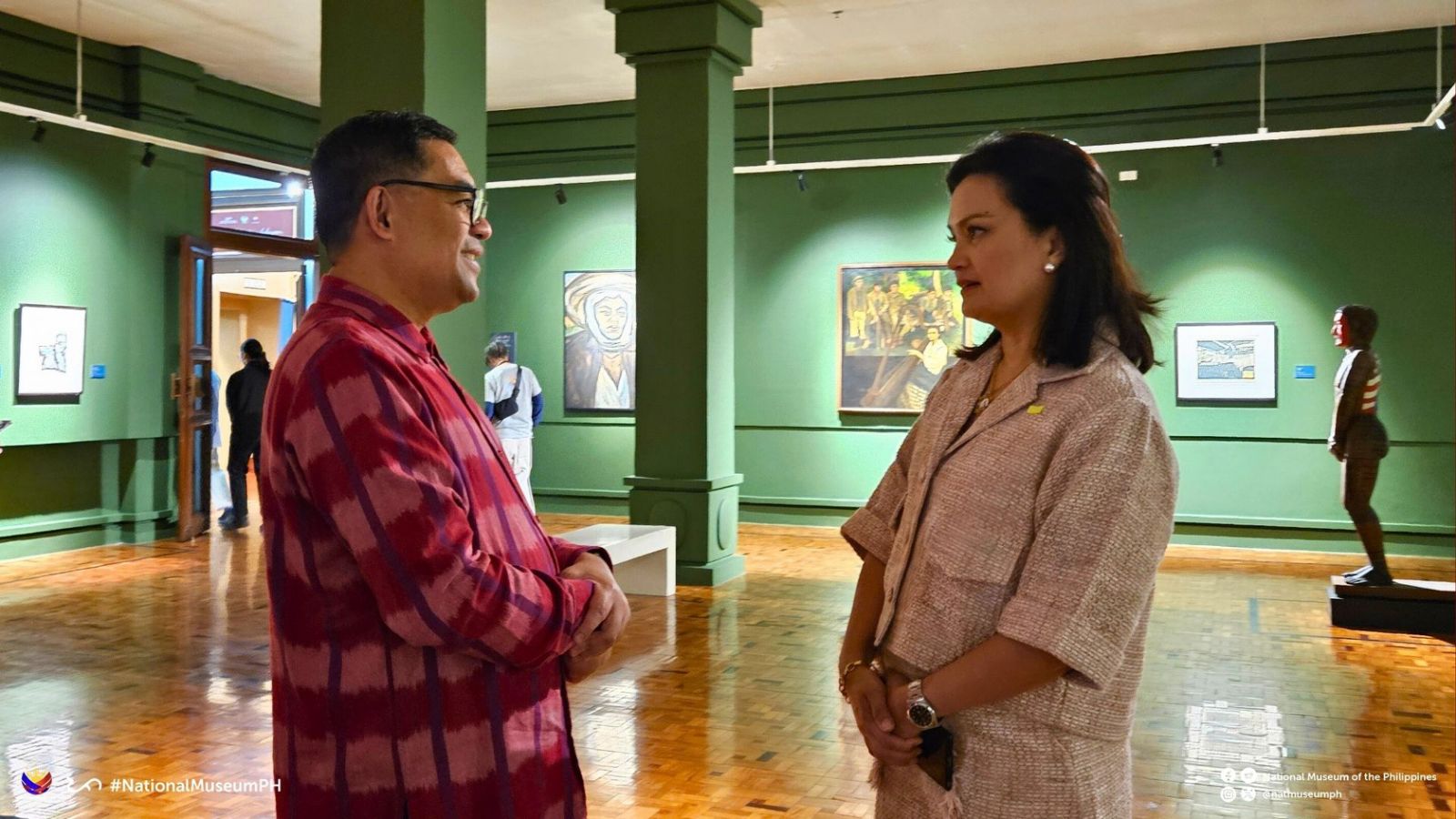
Arvin Manuel Villalon, Acting Deputy Director General for Museums, NMP with Ms. Daphne Osena Paez
Arts & Culture
Asia’s Fashion Czar I Knew as Tito Pitoy; Remembrance of a Friendship Beyond Fashion with Designer Jose R. Moreno
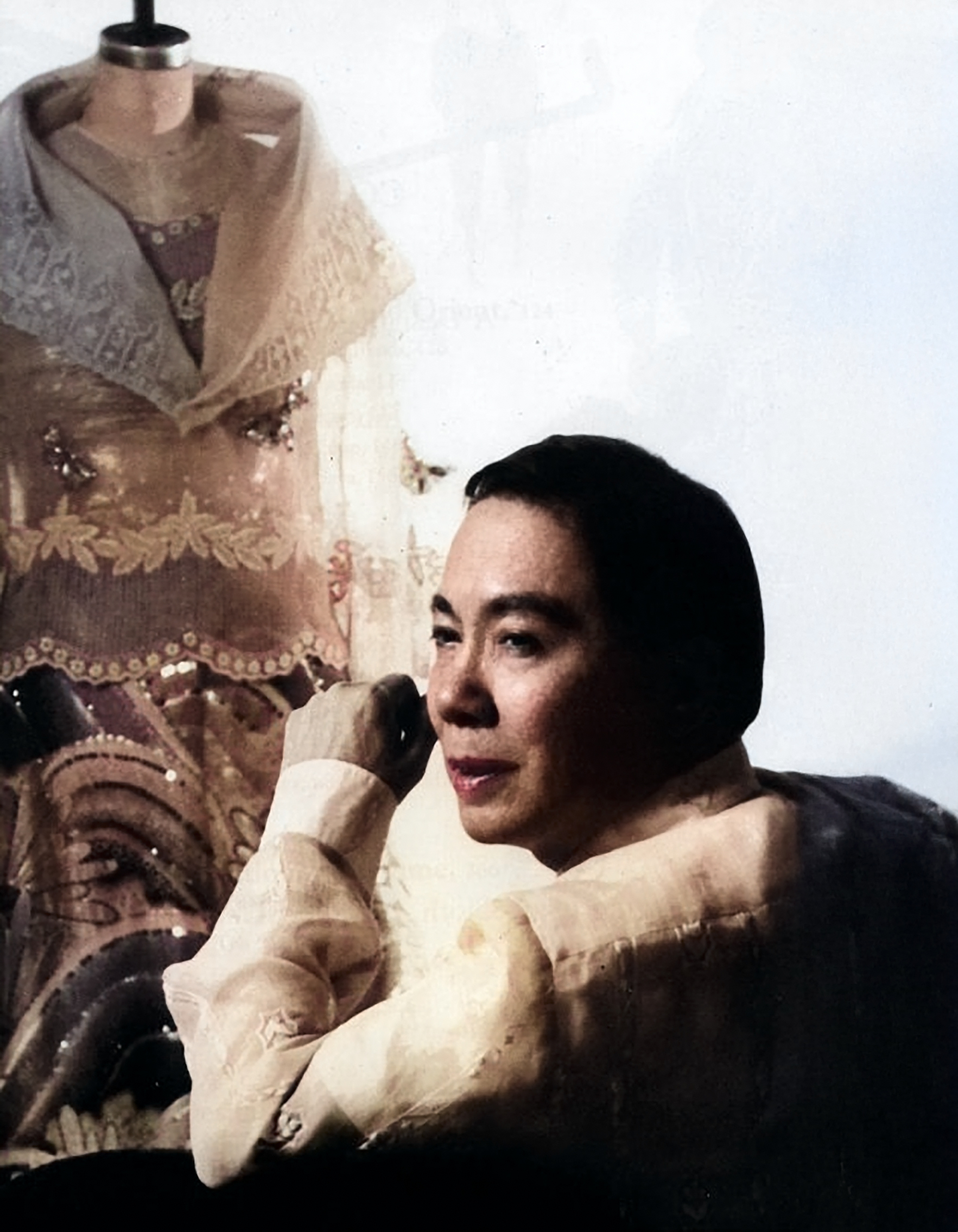
by Jose Carlos G. Campos, Board of Trustees National Museum of the Philippines
My childhood encounter with the famous Pitoy Moreno happened when I was eight years old. My maternal grandmother, Leonila D. Garcia, the former First Lady of the Philippines, and my mother, Linda G. Campos, along with my Dimataga aunts, brought me to his legendary atelier on General Malvar Street in Malate, Manila. These were the unhurried years of the 1970s.
As we approached the atelier, I was enchanted by its fine appointments. The cerulean blue and canary yellow striped canopies shaded tall bay windows draped in fine lace—no signage needed, the designer’s elegance spoke for itself. Inside, we were led to a hallway adorned with Art Deco wooden filigree, and there was Pitoy Moreno himself waiting with open arms—”Kamusta na, Inday and Baby Linda,” as he fondly called Lola and Mommy.
“Ahhh Pitoy, it’s been a while,” Lola spoke with joy.
“Oh eto, may kasal na naman,” my mom teasingly smiled.
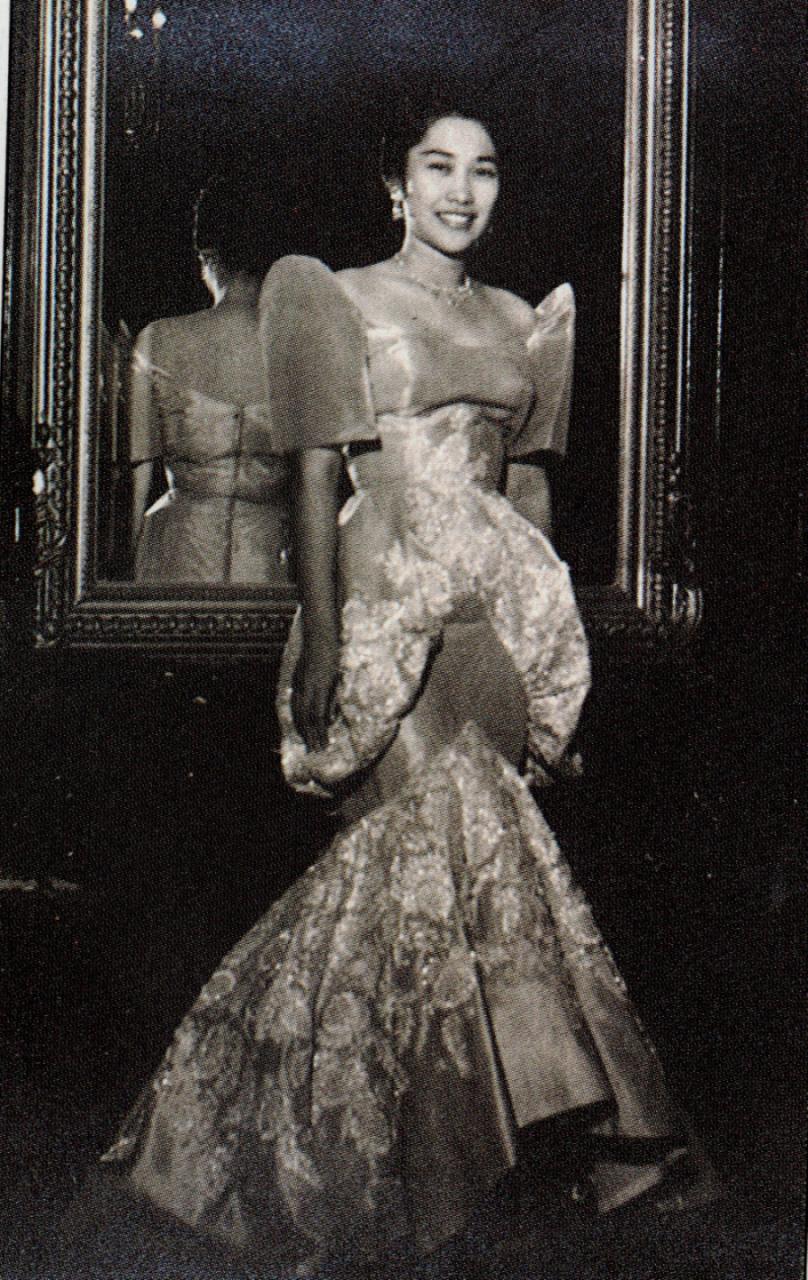
Linda Garcia Campos and Pitoy Moreno’s friendship started when they were students in the University of the Philippines in Diliman.
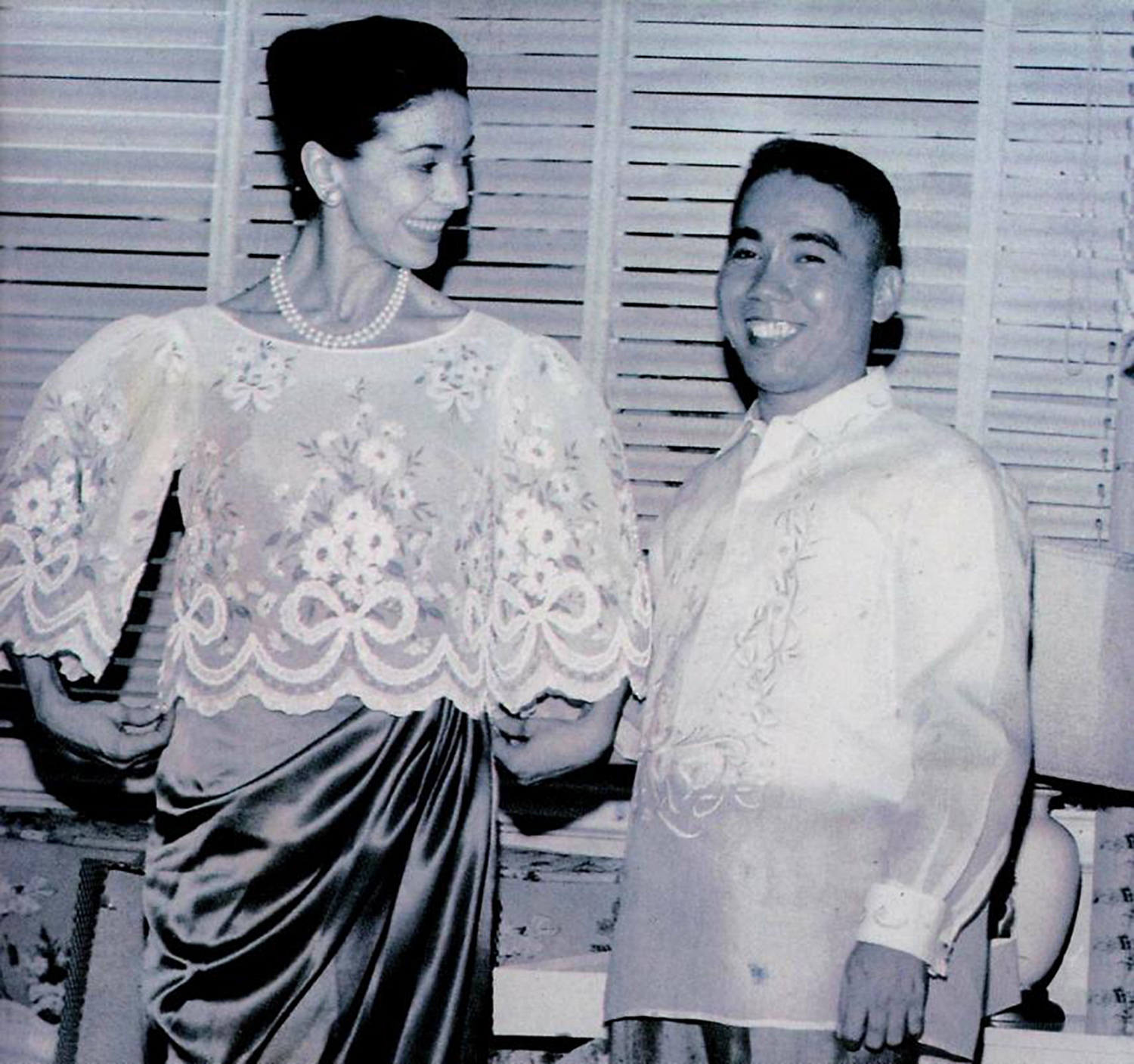
When Dame Margot Fonteyn came for a visit to Manila, Pitoy Moreno dressed her up for an occasion.
We had entered a world of beauty—porcelain figurines, ancient earthenware and pre-colonial relics. It was like stepping into a looking glass, only Pitoy could have imagined.
Destiny led me back years later when my mother Linda told me that Pitoy Moreno was working on his second book, Philippine Costume, and needed research material and editorial advice. At this point, around the 1990s, I was in between assignments—unsure of how a broadcasting graduate like me could possibly contribute to a fashion icon’s masterpiece. Fortunately, I agreed to the project.
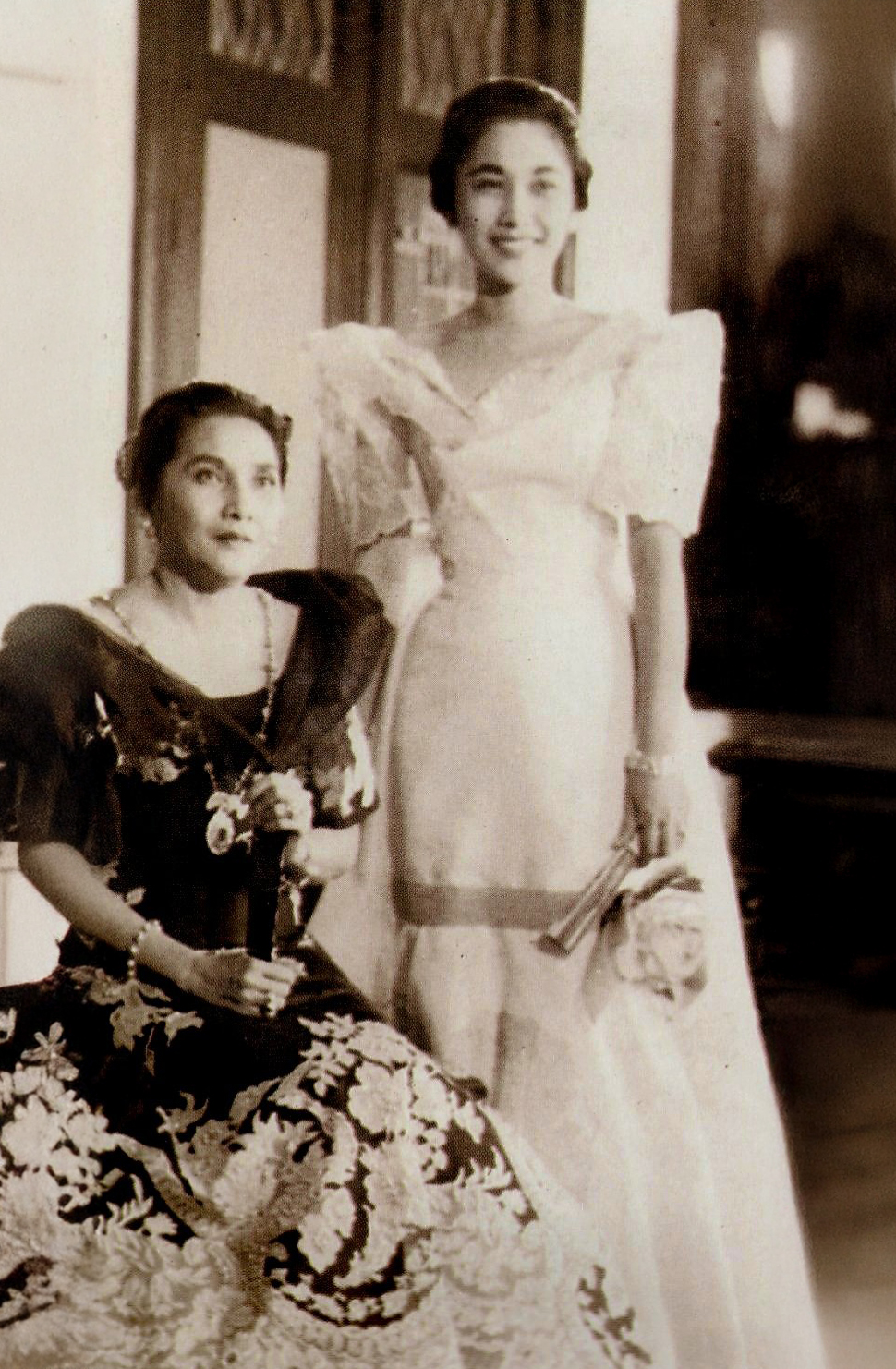
Former First Lady Leonila D. Garcia and daughter Linda G. Campos in Malacañang Palace.
Returning to the designer’s atelier brought back a rush of pleasant memories. The gate opened, and there stood Pitoy Moreno, beaming as always.
“Come in, hijo. Let me show you what I have in mind—and call me Tito Pitoy, okay?”
He led me to his worktable.
“I want to publish a book that tells the story of Philippine fashion—from our pre-colonial roots to the present. A designer’s collection of images and heritage expressed in clothing.”
I was awestruck. “How can I help you?” I inquired.
“Did you know that your mother, Linda, was my barkada in the University of the Philippines in Diliman?” he grinned.
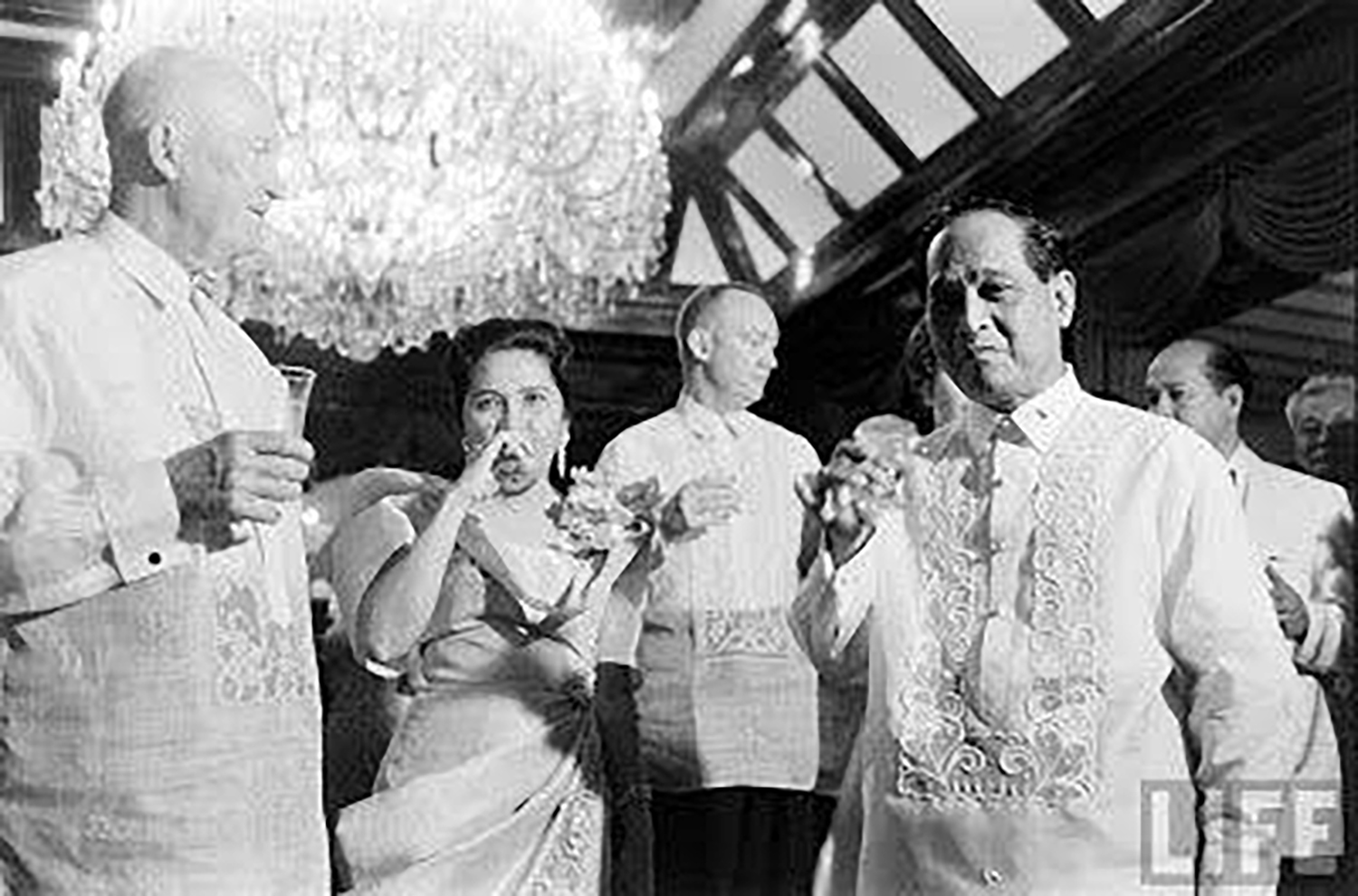
US President Dwight Eisenhower with First Lady Leonila Garcia and President Carlos Garcia in a state dinner at Malacañang Palace in Manila.
That friendship soon led to one of the proudest moments of the designer’s life. He had the opportunity to dress not only the First Lady Leonila D. Garcia but also President Carlos P. Garcia during his term. It was also during this time that the President of the United States, Dwight Eisenhower, came for an official visit to Manila. The designer was able to make clothes for the President, his daughter, and his staff.
“Eisenhower even asked for discounts on the barong Tagalog,” Tito Pitoy laughed.
Tito Pitoy then asked if I could find a terno he had made for my Lola, the former First Lady, which she wore for President Eisenhower’s state visit in 1960.
“How about her other ternos, dated from the 1920s to the 1960s?” I offered.
He lit up.
I scoured my Lola’s extensive closet—it felt like unearthing a legacy. Tucked behind layers of vintage ternos from countless fashion designers, I found that terno, which was photographed by Dick Baldovino along with other pieces for the book project. Once the project was finished and I myself had moved on, my bond with Tito Pitoy never wavered.
When my Lola passed away, he was deeply touched when I personally informed him of the sad news. Once, at the wake of former Vice President Salvador Laurel, he asked me to assist him in the placement of the medals in the chapel.
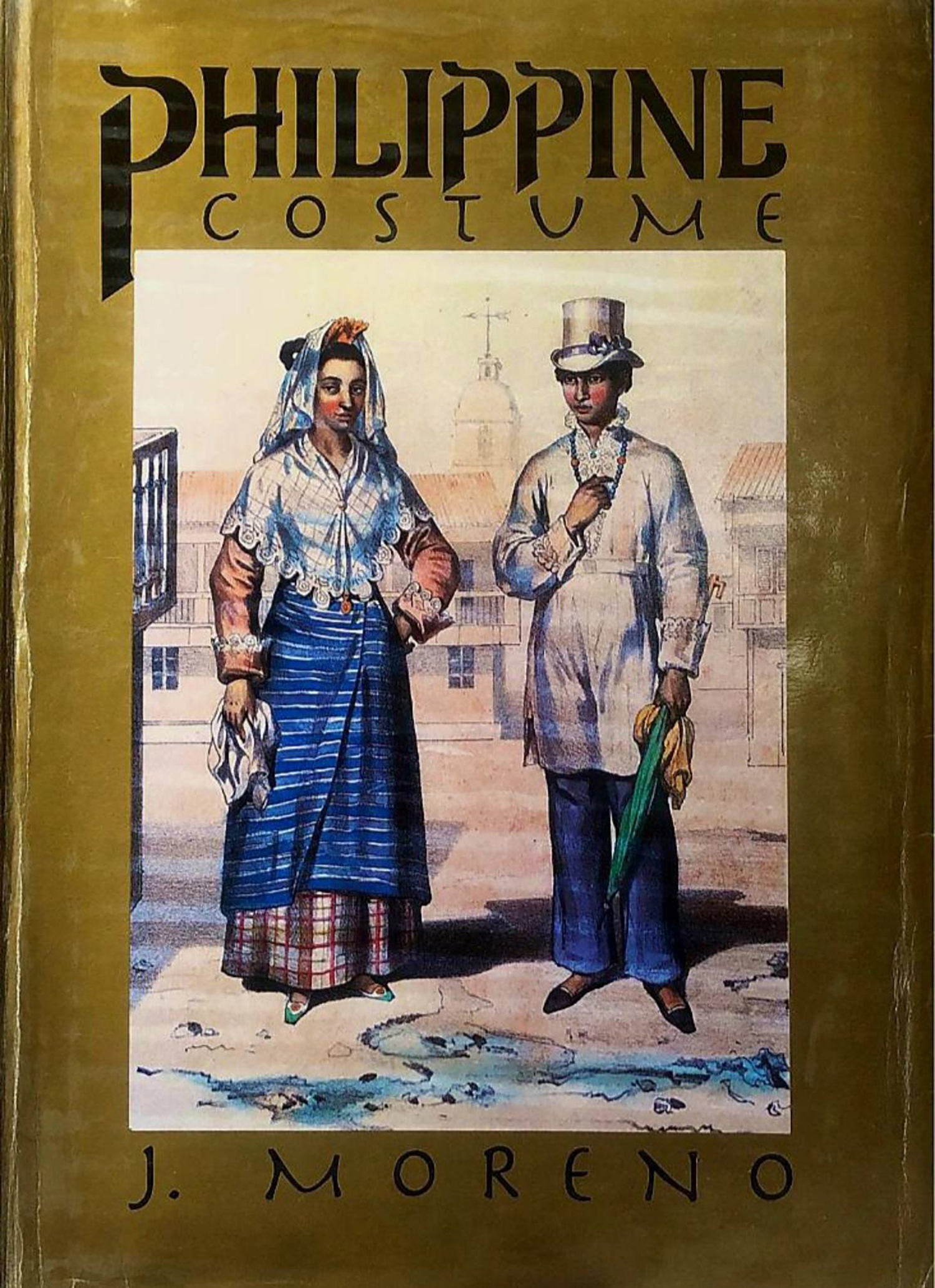
Philippine Costume by Jose Moreno is the designer’s collection of images and heritage expressed in clothing.
Tito Pitoy later invited me to his 80th birthday celebration—a dazzling Manila affair in 2012. During the evening’s festivities, he handed me a printed copy of Philippine Costume and added warmly,
“Thank you, hijo. I’ll call on you for the next one.”
The highlight of his career—and his most unforgettable moment—came during the Metro Magazine Gala fashion show: A Tribute to Pitoy Moreno, Fashion Icon. A collection of evening gowns spanning six decades—many of them unseen and tucked away in his atelier—were revealed that night. When the finale came, Tito Pitoy walked the stage, triumphant and waving to a sea of admirers. Longtime friends from the industry, society’s finest, and fashionistas rose from their seats and gave him a standing ovation.
It wasn’t just to celebrate his craft and ingenuity—it was to honor the man who brought elegance, history, and heart in every stitch.
-

 Style4 weeks ago
Style4 weeks agoHappy Melendres Traipsing Around Manhattan in Non-Stop Armani
-

 Style2 months ago
Style2 months agoThe Invisible Part of Fashion: Five of the Most Enduring Fragrances of All Times
-

 Arts & Culture2 months ago
Arts & Culture2 months agoKultura. Kapital. Kasalukuyan: Art that Speaks of Today
-
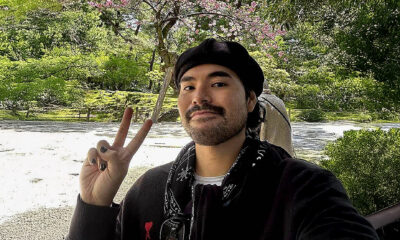
 Prime Target3 weeks ago
Prime Target3 weeks agoMiko Sarmiento: Turning Silk Scarves Into Works of Art
-
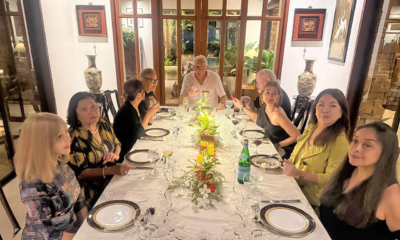
 The Scene1 month ago
The Scene1 month agoAnother Elegant Dinner at Chez Marguerite
-

 Prime Target1 month ago
Prime Target1 month agoLuna Vdl–Endless Summers in Siargao
-

 The Scene2 months ago
The Scene2 months agoA Stylish Soirée: Cebu’s Elite Celebrate Jackie Deen Lotzoff at Mad Thai
-

 QuickFx1 month ago
QuickFx1 month agoI Lost It at the Movies: Five of the Most Significant Films of the 1960s




